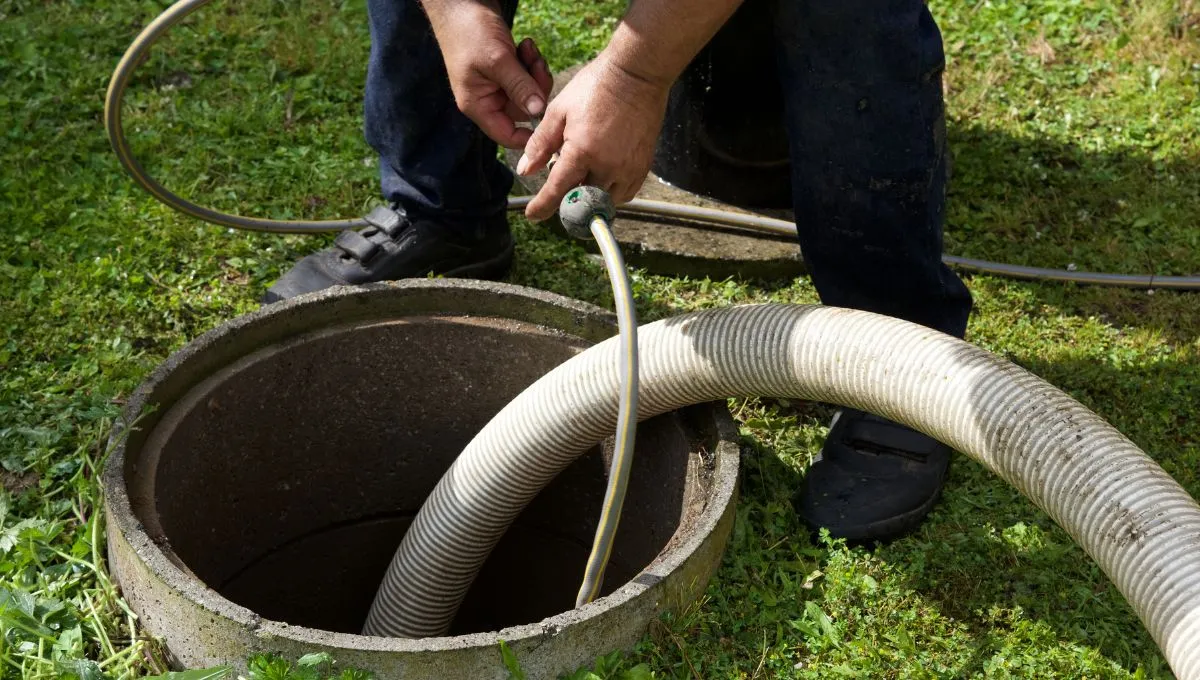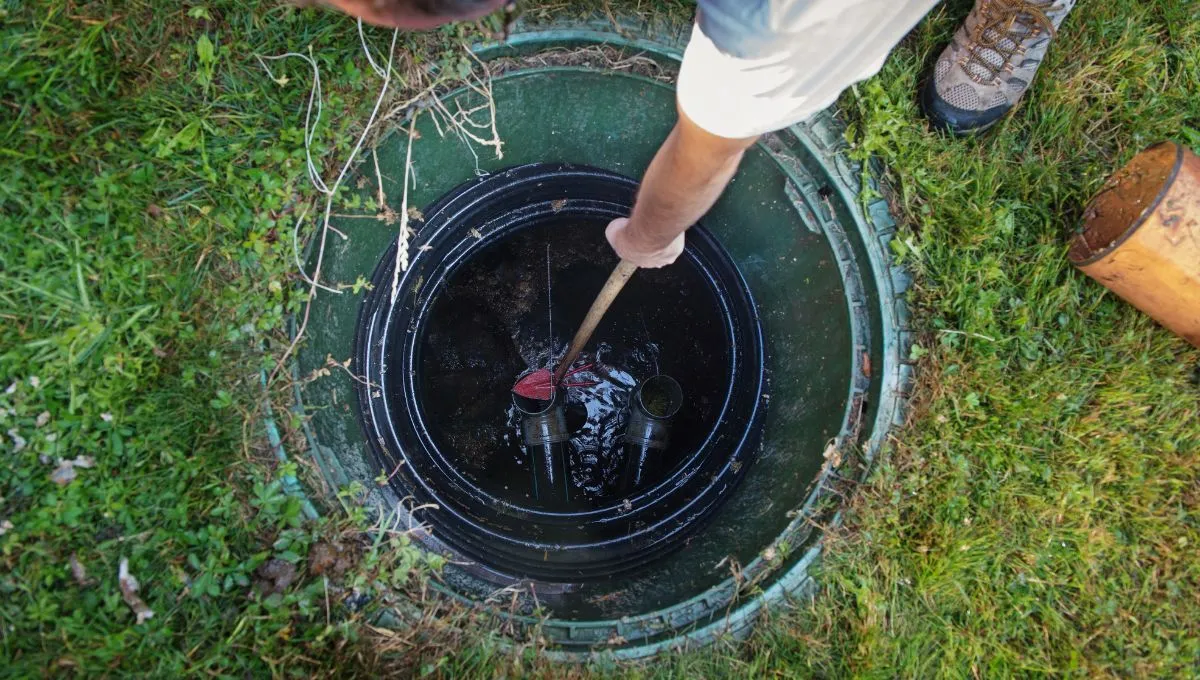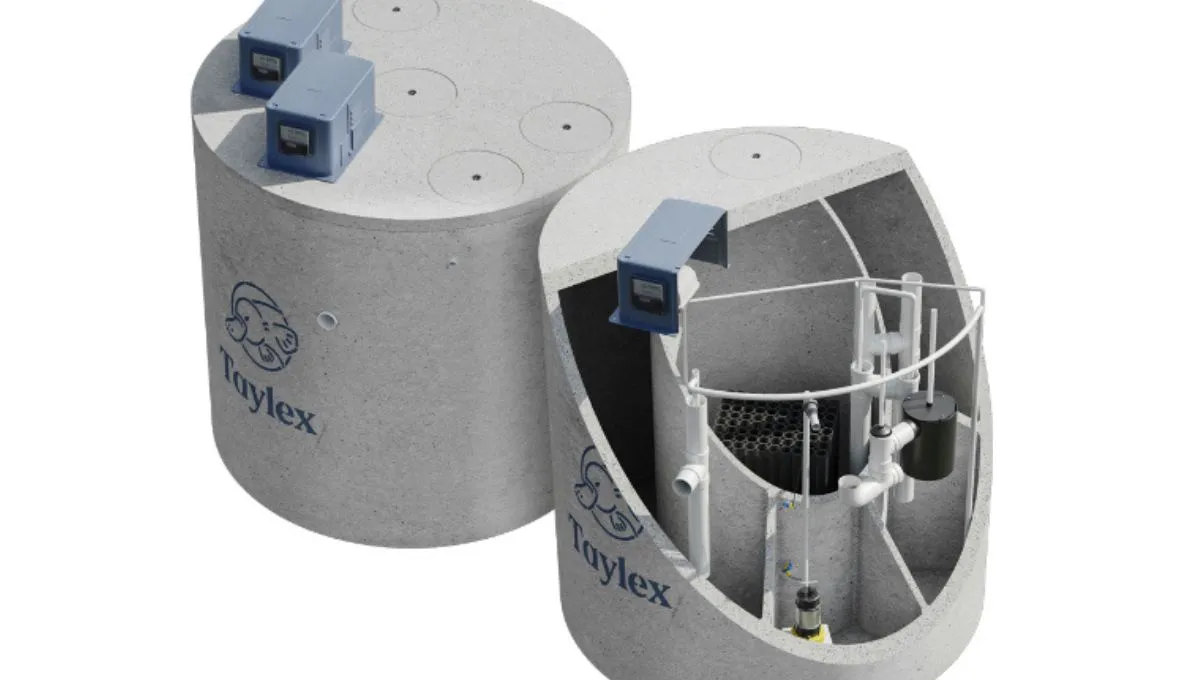— Trusted Since 1969 —

So, what’s a septic tank, and what’s a septic system? The adage, “An ounce of prevention is worth a pound of cure,” perfectly encapsulates the importance of understanding and maintaining your septic system. Unfortunately, for most of you, a septic tank may be the last thing on your mind.
Understanding the basics can save you a lot of trouble down the line. First things first, safely removing solid waste starts with the septic tank. Knowing how it works ensures your septic system is in good shape. Let’s find out how a well-functioning septic system operates and explore common problems to help you maintain yours effectively.
A septic tank is an underground, watertight container typically made from concrete, plastic, or fibreglass, known as an underground tank or watertight tank. It is essential to residential septic systems, particularly in rural areas without access to municipal sewers. These conventional septic tanks are crucial for receiving, treating, and disposing of liquid wastewater from homes and businesses, acting as the initial stage in the wastewater treatment process.
A septic tank collects and treats wastewater at the property. It uses a simple yet effective process to separate solids from liquids, breaking down contaminants before safely releasing the treated water back into the environment. Understanding this process is crucial for homeowners to ensure the system functions properly and lasts for years.
Septic tanks are essential, especially in areas not serviced by municipal sewers or centralised wastewater treatment systems. These residential septic tanks are the heart of decentralised wastewater treatment systems, effectively processing and disposing of liquid waste. Septic tanks prevent environmental and health hazards associated with improper wastewater disposal.
Here’s where the magic happens. In the septic tank, wastewater enters and undergoes settling and separation. Storing wastewater in the septic tank allows organic material, oils, and grease to separate from the water. Heavier solids sink to form sludge, while lighter solids and grease float as scum. This separation is crucial and naturally reduces harmful coliform bacteria.
Some systems may have sand filters for removing finer particles. Within the tank, aerobic bacteria begin breaking down organic matter in the solids. The partially clarified liquid effluent exits the tank, ready for further treatment in the drain field. This settling, separation, and initial biological treatment within the septic tank are key to the system’s overall wastewater processing.
Want to dive deeper into the workings of a septic tank? Check out our detailed post on How Does a Septic Tank Work? Discover the step-by-step process and ensure your system runs smoothly!
Understanding the key components of a septic system is crucial for proper maintenance and efficient operation. A typical system includes an inlet pipe, septic tank, and drain field (or leach field). It may also have a drainage pipe, perforated pipes, absorption trenches, and a pump chamber. Each plays a part in treating and dispersing your home’s wastewater efficiently.
Some advanced systems incorporate connected chambers, an aeration chamber, a dose tank, and a grease trap. Understanding these components helps homeowners keep their systems running smoothly.
Septic tanks are essential in rural areas where centralised sewage systems are absent. They must adapt to diverse soil types, including varying porosity and absorption rates. This adaptation ensures safe wastewater disposal, protecting public health and the environment.
Septic tanks prevent water supply contamination, reduce the risk of harmful substances reaching the water table, and maintain the soil’s ability to filter treated wastewater. They play a crucial role in maintaining the ecological balance in rural communities by effectively dispersing treated wastewater while respecting the soil’s characteristics.
Want to learn more? Check out our detailed post on “Rural Septic Systems“
The septic system process involves multiple stages to effectively treat liquid waste and ensure the proper treatment of sewage. It begins with wastewater collection in the tank, followed by the separation of solids – heavier ones sink, while lighter solids and grease float. This initial separation provides basic sewage treatment within the septic tank.
The next stage occurs in the drain field, where absorption and filtration further purify the wastewater, removing additional contaminants. Finally, workers disperse the treated water back into the environment. Regular septic system maintenance is crucial for efficient wastewater flow and to ensure the treatment process remains effective.
Septic tanks are available in different materials to suit various needs. Concrete offers traditional strength and durability, while modern plastic tanks are lightweight and corrosion-resistant. The material choice significantly impacts a septic tank’s efficiency and lifespan. Innovative fibreglass tanks are also gaining popularity for their durability and strength.
Taylex is dedicated to quality wastewater treatment, offering a range of durable septic tanks for efficiency. These tanks exceed the average, with single or additional treatment options catering to specific needs.
The right size and type of septic tank are essential for your household’s needs and local environmental conditions. When exploring conventional or advanced designs, consider efficiency and ecological impact. Modern systems may include additional tanks or innovative features for enhanced treatment and reduced environmental harm.
One example is the bed subsurface wastewater infiltration system for efficient treatment and dispersal. Taylex offers various septic tank designs, ensuring environmental compliance and providing efficient options. These designs go beyond conventional tanks, accommodating different volumes, household sizes, and environmental considerations.
Septic tanks offer a reliable and cost-effective solution for the safe disposal and treatment of domestic wastewater, especially in areas without access to centralised sewers. These systems provide a simple and effective means of managing wastewater and protecting your family’s health and the environment. test
Septic tanks facilitate the proper treatment of wastewater, preserving public health and reducing pollution. They are crucial in the sustainable treatment of domestic wastewater, serving as invaluable assets in areas that lack municipal sewers.

Regular septic system maintenance is essential for efficient operation, preventing backups, and extending lifespan. It includes regular inspections and annual tank checks to identify potential issues early. Adhering to a maintenance schedule keeps your system in top shape and avoids costly backups.
Taylex offers services for peace of mind and smooth system operation. We provide routine checks and pumping to remove sludge, promote proper function, and minimise backup risks. Prioritising regular maintenance and annual checks helps you maintain your septic system and prevent backups in your toilets and drains.
It’s important to be vigilant for warning signs such as slow drains, unpleasant odours, sewage backups, water pooling, and signs of septic tank failures. These signs indicate the need for septic system maintenance or possible repairs, and they can be early indicators of issues with disused septic tank systems and septic tank discharge.
Addressing these signs promptly through regular inspections and maintenance can prevent more severe issues, mitigate the risk of septic tank failures, and extend the lifespan of your system. By watching for these signs and taking proactive measures, you can ensure your septic system remains effective, safe, and in optimal working condition, even for disused septic tank systems and during discharge.
Learn to maintain septic tank in-depth in our comprehensive blog, “How to maintain septic tank?“
Caring for your septic tank is essential and can be easily achieved through regular maintenance. To maintain the system’s health, avoid flushing harmful materials and non-biodegradable items. Reducing water usage helps prevent overloading, and scheduling annual tank checks ensures proper inspection and maintenance. These simple steps contribute to the longevity and efficiency of your septic system, along with proactive measures like avoiding heavy solids and maintaining a balanced volume.
By following these guidelines, homeowners can avoid frequent and costly repairs while preserving their septic systems’ optimal performance. Taylex supports homeowners by providing helpful guidelines and services for septic system maintenance, including regular inspections and annual tank checks, to ensure that septic systems are well-cared for and functioning at their best.
Proper maintenance of septic tanks is necessary to prevent environmental hazards, such as the contamination of porous surfaces and groundwater, and protect our water sources. Poorly maintained septic systems have the potential to contaminate both the ground surface and drinking water, posing risks to wildlife and public health. Regular checks and maintenance are essential to prevent these issues from occurring and avoid discharging harmful substances into surface water.
By understanding and reducing the risks associated with improperly managed septic systems, we can ensure the preservation of a healthy environment and the integrity of our water supply. This will benefit not only the local clean water district but also prevent the discharge of pollutants from water softeners that can further impact water quality.
Adopting advanced wastewater treatment systems, such as aerated wastewater treatment systems (AWTS) or constructed sand mounds, and following best practices for septic tank maintenance can significantly reduce septic systems’ environmental footprint. We can minimise environmental impact by using water efficiently, disposing of waste properly, and conducting regular maintenance.
Taylex offers environmentally friendly products and services that align with these goals and support sustainable wastewater management. Septic system owners can effectively reduce their environmental impact by implementing advanced treatment methods like aerobic systems or constructed sand mounds and adhering to regular maintenance. Strategies such as proper waste disposal, efficient water use, and regular checks to prevent leaks and contamination, including monitoring the drainfield trench, are key in achieving this goal.
At Taylex, we are at the forefront of septic tank innovation, offering systems that meet the needs of modern households while prioritising environmental sustainability. Our comprehensive solutions underscore our leadership in the wastewater treatment industry. We make two septic systems: traditional-style and multi-chambered Taylex Maxi tanks.

Experience the reliability and quality of Taylex’s traditional septic tanks, available in sizes from 4,000L to 22,000L. We have engineered our septic tanks with precision, featuring an internal baffle wall and a standard Taylex filter for superior performance. Rest assured, we have built these concrete vessels to last, and they have backings of a generous 15-year warranty. With Taylex, you can access various outlet filters that perfectly complement our septic tanks. Trust Taylex to provide durable, efficient, customisable septic tank solutions designed to exceed your expectations.
Experience the power and versatility of the Taylex Maxi Tank – the ultimate solution for your septic system needs. Unlike traditional septic tanks with limited capacities, the Maxi Tank stands tall as a giant among its peers. Its large size allows for extended effluent storage, resulting in cleaner water discharge. And we all know that cleaner water means a healthier environment and more savings in your pocket, as the absorption trenches you’ve installed will last longer.
The Maxi Tank’s brilliance lies in its simplicity. This strong tank can be utilised in various applications, providing unparalleled flexibility and performance.
The Maxi Tank covers you, accommodating black water and grey water in separate sealed chambers.
No problem! Collect all the waste in the tank and pump the effluent to absorption trenches for efficient treatment.
But wait, there’s more!
The Maxi Tank also doubles as a pump station. It effortlessly handles solid particles in one chamber while filtering the water through others, delivering pristine effluent to the discharge chamber.
You can even rely on the Maxi Tank for sand filter treatment systems, which industry professionals trust for their exceptional performance.
Refrain from settling for the ordinary when you can have extraordinary with the Taylex Maxi Tank. Embrace the power, versatility, and reliability of this game-changing septic system solution. Upgrade to the Maxi Tank today and experience the pinnacle of performance and innovation.